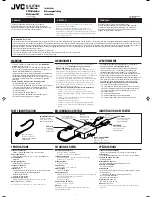
U
ser
'
s
G
Uide
— 25
note:
In this example, it is assumed that your current air/fuel settings
and jet numbers are correct for your engine’s requirements at wide
open throttle. This example uses a basic Holley carburetor with
squared jetting and identical primary and secondary main metering
circuits. This example demonstrates how to compare a baseline ADI
value to a new ADI value and the meaning of the difference between
the two. In practice, this example can be used between ADI calcula-
tions at the same track throughout the day or between ADI calcula-
tions at two different tracks; the theory is the same.
Calculate the Air Density Index (ADI) and Density Altitude.
KeysTroKe
disPlay
1. Clear all stored values and enter current local measured
weather conditions:
(Clear All)
all Cleared
TeMP
80. °f
(Pressure)
P-abs
29.15
inHG
rH%
53.5
%
2. Calculate ADI and Density Altitude:
eleV
0.*
adi 92.038
%
d-alT 2813.209
f
* Notice that the Elevation output is 0 feet. This is because the example
did not include entering an Elevation. Elevation is only a required input if
absolute Pressure is not available. Record the calculated ADI of 92.038%
and Density Altitude of about 2,813 feet in your log, along with your air/
fuel settings and jet numbers. In this example, these are your baseline
settings for this particular track location.
you are now at a different track location and the current weather
conditions have changed significantly. The Air Temperature is
now 60° F, absolute Pressure is 24.72 inHg and relative humidity
is 39%.
Calculate the current ADI in order to determine if an adjustment
is necessary.
(cont'd)
UG8703E-B-inside.indd 25
3/3/2010 3:03:58 PM
Содержание Hot Rod Calc
Страница 1: ...Model 8703 ...
















































